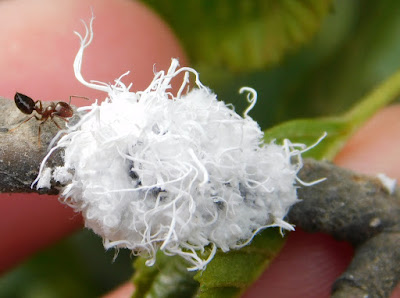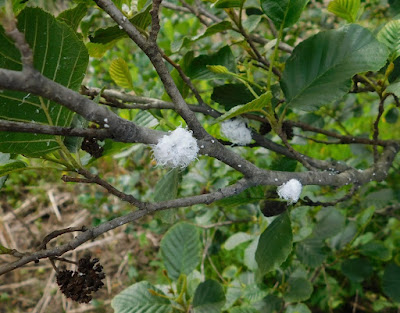Sue and I had been working up to a day trip to La Plata, Missouri, for months—Sue longer, because she’s the one who discovered the
Virtual Railfan’s La Plata webcam this spring, when it came up as a suggestion while she was watching some other video.

Just in case you haven’t heard of
Virtual Railfan, here’s the deal: it’s a group of people (with a YouTube channel) who are all about watching trains: “Virtual Railfan is the premiere provider for live train cams all over the United States [plus Revelstoke, B.C., Canada] providing live views from some of the most iconic railroading spots on earth.” They have webcams in 21 locations, and La Plata is one. Here's the camera that faces east:

Here's the view west . . .

And here's the view east . . .

The VR folks work with the different railroad companies and set up live webcams at various places—usually stations or crossings where there’s a pretty large amount of train traffic each day. And the webcams let us witness things like the sounds of far-off train horns, the sight and sound of railroad crossing gates, a widening glare of headlights (if it’s night), and then the thunderous succession of engines and cars roaring by. Like this.
In many places, there are two webcams set up, so you can view both directions of the rail line. You can “rewind” the video back for 12 hours, to see what you’ve missed, or just to see a train, if you don’t want to wait for the next one to arrive. Also, live commenting is allowed, but it is moderated effectively, so it’s actually a pleasant experience. Like, you could let your kids watch it. The chitchat reveals actual camaraderie.
So why La Plata? La Plata’s a small town in northern Missouri with a population of 1,366.

You’d think there’d be a Virtual Railfan webcam set up here in Jeff City, with our attractive Amtrak station in the historic Union Hotel, at the Jefferson Landing State Historic Site, with the Missouri State Capitol in the background. Seems like we’re always hearing train horns!
But apparently, La Plata gets much more train traffic. While Jeff City is on the Union Pacific line and has the Missouri River Runner Amtrak lines, little ol’ La Plata averages between 50 and 70 BNSF trains every 24 hours, plus Amtrak’s Southwest Chief comes by twice a day. And although BNSF owns the line, Union Pacific (BNSF’s main competitor) has trackage rights and often runs about 6 of its trains through each day, too. So although at times it might seem about as interesting as watching paint dry, it’s actually rather entertaining—with the messaging, it’s sort of like waiting for a train
with somebody. And at any given time in an evening, there may easily be some 500 to 1,000 people watching.

So, yes, La Plata’s history is tied with the railroad. The WPA’s
Missouri: A Guide to the Show Me State (1941) offers a snapshot of 1930s Missouri. It noted that La Plata had a population of 1,421 and was positioned “at the junction of the Wabash and Santa Fe railroads.”
In the town’s early days, it carried both the Wabash line (which later became the Norfolk Southern, which today doesn’t go through the town), AND the Atchison, Topeka, and Santa Fe (ATSF, or “Santa Fe” for short). The ATSF ran through La Plata as it made a beeline from Chicago to Kansas City (bypassing St. Louis). The ATSF later merged with the Burlington Northern to became BNSF, and that’s the line that carries so much freight (both container and bulk cargo such as grains) now.
La Plata cherishes its railroading history. A motel in town, called the Depot Inn, has indoor and outdoor displays of railroad memorabilia and amounts to a small railroad museum. It is absolutely worth seeing, even if you don’t intend to stay the night.
And of course, we spent some time at the La Plata railroad station itself—after watching La Plata vicariously through a webcam, it was fun to see it in real life. The train station is definitely a historic structure, and it’s undergoing some restoration.

The current station is Art Deco style and dates back to a major remodel after a fire in 1945. In the late 1990s, people started working to renew the station: coalitions of town boosters and preservationists, railroad clubs, railroad restoration foundations. and other nonprofits. Money has come from grants, from a U.S. Department of Transportation matching-funds program, and even some money from the Missouri legislature—plus, of course, volunteer work and private donations. The American Passenger Rail Heritage Foundation (APRHF) continues to work to find grants, organize fundraisers, and so on, to maintain the historic station.
So if you look at the La Plata webcams these days, you’ll probably see workers improving the walkways, railings, and other facilities at the station. They’re doing a nice job!

The station is closed most of the time, and although they don’t sell tickets there, a caretaker is at the station every day to open its doors and offer customer service and information during Amtrak train times. Amtrak’s Southwest Chief has thirty-two stops, including one at little ol’ La Plata, Missouri, as it runs from Chicago to Los Angeles. Judging from the live chat comments, I guess there are railfans who are especially interested in watching Amtrak trains.

So, we had a fun time snooping around the (closed) station, waiting for and seeing several trains go by, and driving around the town. We had lunch at the Santa Fe Espresso restaurant in downtown La Plata. After another visit to the station, we looked at the Depot Inn museum and then walked over the Brown Street bridge that crosses over the train tracks east of the station. No, there’s no decent sidewalk or even shoulder for pedestrians to be safe on that bridge, but on the baking hot Saturday afternoon there was hardly anyone on the roads, so we got our pictures in relative safety. Don’t tell anyone.
I also got a video of that. (You’re welcome!)
More on our La Plata excursion soon. Did I mention that Sue was really excited to see the La Plata railroad station in real life?

































































